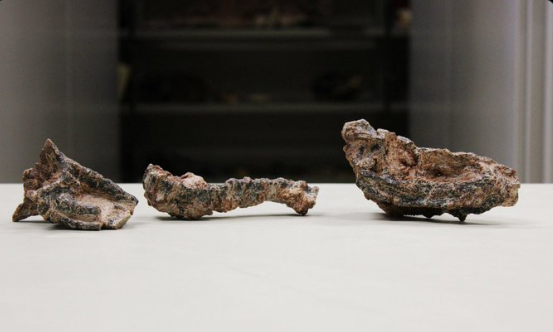As exploration continues all over the world, have you noticed we are discovering more and more species that have never been even thought of?
A newly identified ancient reptile species, named Parvosuchus aurelioi, has been discovered and offers a glimpse into the pre-dinosaur world of the Triassic period, about 237 million years ago. This finding, made by a team led by Universidade Federal de Santa Maria paleontologist Rodrigo Müller, marks the first confirmation of a gracilisuchid in Brazil, a subgroup of pseudosuchians that once roamed parts of China, Argentina, and now confirmed in Brazil.
A paper in @SciReports describes the discovery of a new, ancient, predatory reptile dubbed Parvosuchus aurelioi in Brazil. The specimen, which dates to about 237 million years ago, is the first small predatory reptile of its kind to be found in Brazil. https://t.co/wa4vhZT3WR pic.twitter.com/Gm6L7XXMIr
— Nature Portfolio (@NaturePortfolio) June 20, 2024
Pseudosuchians were dominant quadruped reptiles before the rise of the dinosaurs, with some species being among the largest carnivores of their time. Gracilisuchids, smaller members of this group, were characterized by their enlarged heads with broad openings, carnivore-like teeth, slender limbs, and a four-legged stance. Parvosuchus aurelioi’s discovery sheds light on the diversity and distribution of these ancient creatures during the Triassic period.
A Brazilian scientist has identified fossils of a small crocodile-like reptile called Parvosuchus aurelioi that lived during the Triassic Period several million years before the first dinosaurs, according to research published on Thursday in the journal Scientific Reports. pic.twitter.com/Q22pe6Ij9F
— People’s Daily, China (@PDChina) June 21, 2024
The specimen of Parvosuchus aurelioi was unearthed in the Santa Maria Formation located in Paraíso do Sul, Rio Grande do Sul, Brazil. The discovery includes a well-preserved partial skeleton featuring a complete skull with the lower jaw, 11 dorsal vertebrae, a pelvis, and partial limbs. The reptile’s skull, measuring 14.4 cm in length, showcases long slender jaws equipped with backward-curving pointed teeth and several openings, typical of a predator.
The overall structure of the skeleton is delicately built, with an estimated total length of less than one meter. These anatomical features confirm Parvosuchus aurelioi as a gracilisuchid, marking an important milestone in understanding the evolutionary history and ecological diversity of pseudosuchians during the Triassic.
ROAAAAR 🦕
Fossils of the “Parvosuchus Aurelioi,” a pre-dinosaur era reptile were found in Brazil. It was known that the Parvosuchus Aurelio fed on smaller reptiles. The Parvosuchus Aurelioi looks like a small crocodile with four legs and is 3-feet long.
Researchers believe… pic.twitter.com/5dPRk6naFO
— GMA Integrated News (@gmanews) June 21, 2024
Major Points:
- A new ancient reptile species, Parvosuchus aurelioi, dating back to 237 million years ago during the Triassic period, has been identified in Brazil.
- This discovery marks the first confirmation of a gracilisuchid, a subgroup of pseudosuchians, in Brazil; previously, gracilisuchids were known from China and Argentina.
- The partial skeleton of Parvosuchus aurelioi was found in the Santa Maria Formation in Paraíso do Sul, Rio Grande do Sul, and includes a complete skull, vertebrae, a pelvis, and limbs.
- The skull measures 14.4 cm in length, featuring long slender jaws with backward-curving pointed teeth, indicating carnivorous traits.
- This finding provides new insights into the diversity and geographic distribution of pseudosuchians before the rise of dinosaurs, highlighting their ecological significance during the Triassic period.
A.D. Poppolo – Reprinted with permission of Whatfinger News



